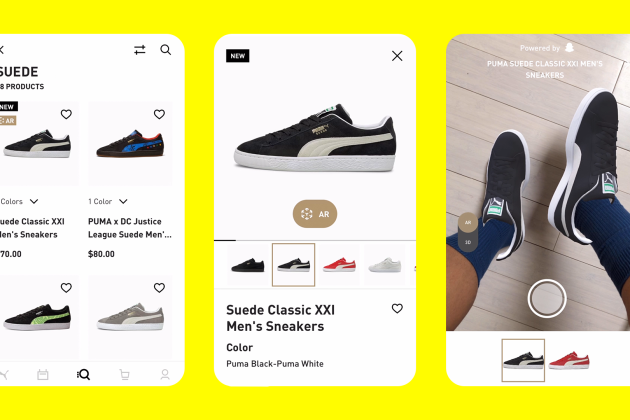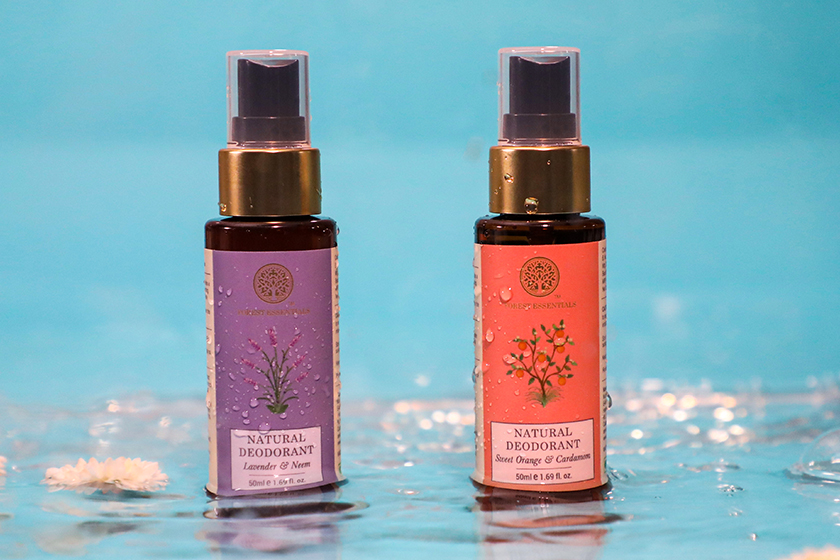
Snapchat’s augmented reality-powered shopping is now coming for fashion in a major way, per the company’s latest announcements at its Snap Partner Summit on Thursday.
Amid the raft of updates, Snap’s new retail-oriented features showcased how its fashion ambitions are evolving. The company revealed more sophisticated virtual fashion try-ons while lowering the technical bar, so any brand can jump into AR-powered shopping. To boost discovery, the platform also created a new “Dress Up” destination, so users have one place to check out new looks and products or get inspiration. It also seemed to offer its take on metaversal fashion, by turning Bitmojis into a virtual style platform.
More from WWD
Thanks to image-processing tech from Forma, the developer unveiled a feature that can turn 2D catalogue images into 3D AR assets, along with AR shopping templates for easier web-based lens creation. In essence, it means brands can go from product image to Snapchat AR Lens with far less fuss. There’s even a new 3D asset manager to wrangle all that content.
The platform was already capable of fashion try-ons for some items, but it’s nudging the scenario from entertainment into conversion territory now. Not only has Snap’s research and development team been working to make the visuals more sophisticated and realistic, but the company’s April 2021 acquisition of Fit Analytics bears fruit in this crop of releases as well, bringing size-prediction tech to the table.
By taking a full-body selfie, shoppers can try on virtual outfits and, perhaps, have a reasonable expectation that it may look that way in reality.
The features aren’t merely restricted to the Snapchat app alone, either. They roll up into Camera Kit, Snap’s software development tools, which allow outside developers to bring Snapchat lenses to other apps and websites. The kit itself has evolved to become even more retail-friendly.
“What we’ve launched this year are specific enhancements to the prior Camera Kit that was specifically tailored for the retail use case,” Carolina Arguelles, head of global AR product strategy for Snap, told WWD. “We took our initial Camera SDK, which says that any capability we have in Lens Studio, any AR creation tools in that build is usable with Camera Kit…we’ve taken that infrastructure and layered on top an additional set of integrations, which integrate directly into [brands’] commerce back end.”
The result, she explained, is that the actual integration between Snap and the brand’s app, or the distribution of the content across their product detail pages, happens more seamlessly. “This is a specific enhancement to the Camera Kit SDK, and it’s really meant only for retailers.”
Snap revealed that Puma is the first global brand partner to use the new Camera Kit, allowing shoppers to digitally try-on Puma sneakers.
The announcements are one part of a “dual approach to trying to solve the try-on opportunity for apparel,” added Arguelles. As it revealed last year, Snap is also working with cloth simulation and body mesh, or body-tracking, technology, so it can render digital textiles and their physics more realistically against how the body moves.
“When you think about apparel try-on, even last year, it was the biggest opportunity, because it is the largest category for commerce,” she continued. “But it’s also the one that suffers from the highest return rate. It’s the one that has been difficult — the most difficult to bring to try on…the creation of assets is very difficult, if you’re creating a 3D asset for apparel, to the rendering and not being realistic.”
Since last year, the company has been investing in different technologies to spur apparel try-ons in two ways: One is through its work with cloth simulation and body mesh, which, she said, is making serious gains, as it increasingly accounts for physics like gravity and refines its body-tracking capabilities.
The other is to ditch the need for retailers to deal with 3D modeling altogether, as the new image-processing feature uses standard product photography.
For shoppers, Snap has created a Dress Up hub “that brings together the best of AR fashion and try-on experiences from creators, retailers and fashion brands all in one place,” a Snap spokesperson said.
Dress Up is the first dedicated area specifically created for fashion experiences and shopping on Snapchat. That could help separate the category from the firehose of other AR content and shopping on the platform. More than 250 million users have used AR lenses to shop more than 5 billion times, according to the company, which added that AR lenses are converting a lot more consumers than standard ads.
But Snap’s fashion push goes beyond shopping for real-world products, and into its avatars.
Six years ago, when the company acquired avatar company Bitmoji, the fashion industry hadn’t yet heard of the metaverse or traded in virtual fashion or NFTs. Now, after having created more than 1 billion Bitmojis, the company is upgrading the avatars and turning them into a fashion platform. The update brings 3D designs and a slew of poses, gestures and backgrounds — more than 1,200 of them — into full-body mode. The graphics go from cartoonish to boast a more “Pixar”-level quality.
As a fashion platform, partners will be able to drop limited-edition fashion items for Bitmoji, as exclusives for Snapchatters.
The move looks like Snap’s variation on the virtual fashion movement spreading across the industry, and when asked if Bitmojis might one day delve into NFTs, Arguelles became reticent.
“Nothing to share right now,” she responded. “That’s not what this specific launch is. But I think we’re really excited about the future within the digital space more broadly. There are obviously a lot of NFT conversations happening in the world right now, and we have some of the leading platforms people were talking about — like DressX and Rtfkt have actually been longtime Lens Studio users as well.”
Other announcements focused on Snap’s creator community and other features, including a “private components system” for Minis, or bite-sized extras that third-party developers like Poshmark can add as features. The system allows brands to add more social experiences, such as ratings, reviews and recommendations, but designed in a way to protect users’ privacy.
But for Arguelles, the shopping announcements feel like a full-circle moment that underscores the company’s vision from Day One, which is to be a camera company.
As if that needed to be emphasized even further, Snap dropped one more reveal: A new flying pocket-sized camera called Pixy, which apparently aims at taking selfies to new heights.
“I think our camera-first approach from Day One is really setting us up for the future, which we were always intentional about,” Arguelles added. “I think people are finally realizing that, when we said ‘we’re a camera company,’ it sort of makes sense to everyone now.
“But for us, this was the vision we were always building toward.”





More Stories
5 Mistakes to Avoid When Buying Kids’ Clothes Online
Buying Designer Indian Clothes Online for an Indian Bride
Swap Second Hand Clothing and Accessories and Revitalize Your Wardrobe